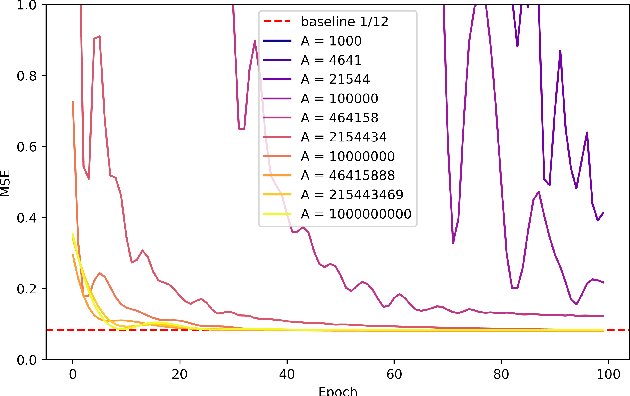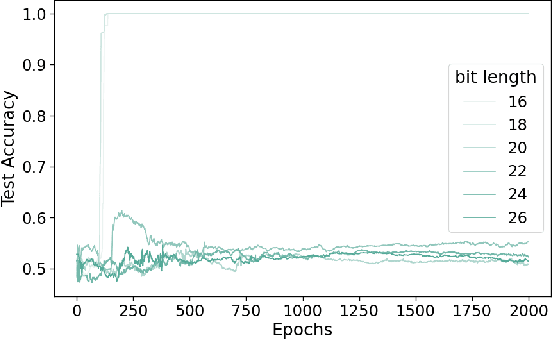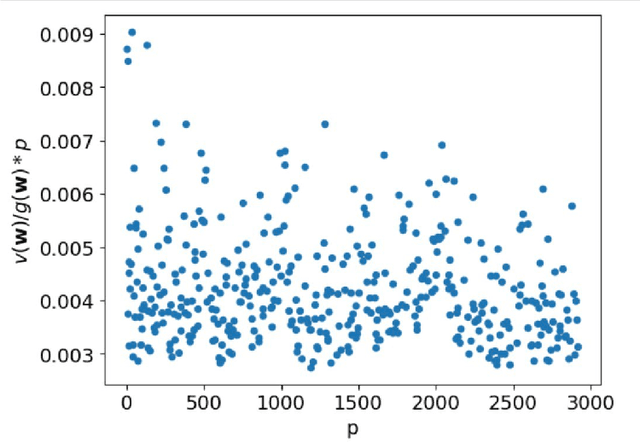Arman Bolatov
Overspecified Mixture Discriminant Analysis: Exponential Convergence, Statistical Guarantees, and Remote Sensing Applications
Oct 30, 2025Abstract:This study explores the classification error of Mixture Discriminant Analysis (MDA) in scenarios where the number of mixture components exceeds those present in the actual data distribution, a condition known as overspecification. We use a two-component Gaussian mixture model within each class to fit data generated from a single Gaussian, analyzing both the algorithmic convergence of the Expectation-Maximization (EM) algorithm and the statistical classification error. We demonstrate that, with suitable initialization, the EM algorithm converges exponentially fast to the Bayes risk at the population level. Further, we extend our results to finite samples, showing that the classification error converges to Bayes risk with a rate $n^{-1/2}$ under mild conditions on the initial parameter estimates and sample size. This work provides a rigorous theoretical framework for understanding the performance of overspecified MDA, which is often used empirically in complex data settings, such as image and text classification. To validate our theory, we conduct experiments on remote sensing datasets.
Gradient Descent Fails to Learn High-frequency Functions and Modular Arithmetic
Oct 19, 2023



Abstract:Classes of target functions containing a large number of approximately orthogonal elements are known to be hard to learn by the Statistical Query algorithms. Recently this classical fact re-emerged in a theory of gradient-based optimization of neural networks. In the novel framework, the hardness of a class is usually quantified by the variance of the gradient with respect to a random choice of a target function. A set of functions of the form $x\to ax \bmod p$, where $a$ is taken from ${\mathbb Z}_p$, has attracted some attention from deep learning theorists and cryptographers recently. This class can be understood as a subset of $p$-periodic functions on ${\mathbb Z}$ and is tightly connected with a class of high-frequency periodic functions on the real line. We present a mathematical analysis of limitations and challenges associated with using gradient-based learning techniques to train a high-frequency periodic function or modular multiplication from examples. We highlight that the variance of the gradient is negligibly small in both cases when either a frequency or the prime base $p$ is large. This in turn prevents such a learning algorithm from being successful.
Intractability of Learning the Discrete Logarithm with Gradient-Based Methods
Oct 02, 2023



Abstract:The discrete logarithm problem is a fundamental challenge in number theory with significant implications for cryptographic protocols. In this paper, we investigate the limitations of gradient-based methods for learning the parity bit of the discrete logarithm in finite cyclic groups of prime order. Our main result, supported by theoretical analysis and empirical verification, reveals the concentration of the gradient of the loss function around a fixed point, independent of the logarithm's base used. This concentration property leads to a restricted ability to learn the parity bit efficiently using gradient-based methods, irrespective of the complexity of the network architecture being trained. Our proof relies on Boas-Bellman inequality in inner product spaces and it involves establishing approximate orthogonality of discrete logarithm's parity bit functions through the spectral norm of certain matrices. Empirical experiments using a neural network-based approach further verify the limitations of gradient-based learning, demonstrating the decreasing success rate in predicting the parity bit as the group order increases.
Long-Tail Theory under Gaussian Mixtures
Jul 24, 2023



Abstract:We suggest a simple Gaussian mixture model for data generation that complies with Feldman's long tail theory (2020). We demonstrate that a linear classifier cannot decrease the generalization error below a certain level in the proposed model, whereas a nonlinear classifier with a memorization capacity can. This confirms that for long-tailed distributions, rare training examples must be considered for optimal generalization to new data. Finally, we show that the performance gap between linear and nonlinear models can be lessened as the tail becomes shorter in the subpopulation frequency distribution, as confirmed by experiments on synthetic and real data.
A Central Asian Food Dataset for Personalized Dietary Interventions, Extended Abstract
May 12, 2023Abstract:Nowadays, it is common for people to take photographs of every beverage, snack, or meal they eat and then post these photographs on social media platforms. Leveraging these social trends, real-time food recognition and reliable classification of these captured food images can potentially help replace some of the tedious recording and coding of food diaries to enable personalized dietary interventions. Although Central Asian cuisine is culturally and historically distinct, there has been little published data on the food and dietary habits of people in this region. To fill this gap, we aim to create a reliable dataset of regional foods that is easily accessible to both public consumers and researchers. To the best of our knowledge, this is the first work on creating a Central Asian Food Dataset (CAFD). The final dataset contains 42 food categories and over 16,000 images of national dishes unique to this region. We achieved a classification accuracy of 88.70\% (42 classes) on the CAFD using the ResNet152 neural network model. The food recognition models trained on the CAFD demonstrate computer vision's effectiveness and high accuracy for dietary assessment.
Empirical Analysis of the AdaBoost's Error Bound
Feb 02, 2023



Abstract:Understanding the accuracy limits of machine learning algorithms is essential for data scientists to properly measure performance so they can continually improve their models' predictive capabilities. This study empirically verified the error bound of the AdaBoost algorithm for both synthetic and real-world data. The results show that the error bound holds up in practice, demonstrating its efficiency and importance to a variety of applications. The corresponding source code is available at https://github.com/armanbolatov/adaboost_error_bound.
 Add to Chrome
Add to Chrome Add to Firefox
Add to Firefox Add to Edge
Add to Edge